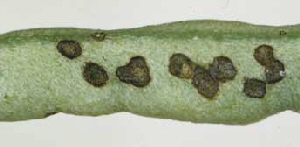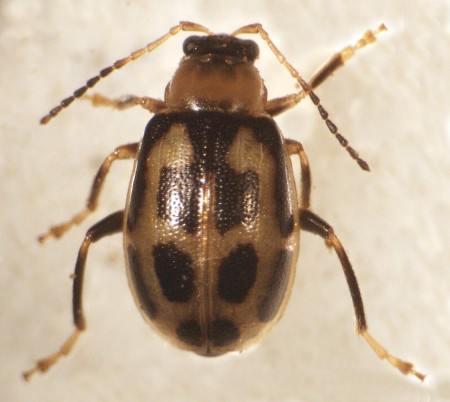Bean Leaf Beetle
 Scientific Name
Scientific Name
Cerotoma trifurcata
Hosts
The adults feed primarily on legumes. The most common hosts are snap beans, soybeans, and alfalfa in Oklahoma.
Symptoms
The beetles feed on pods and the underside of bean leaves, and the damage will appear as small, round holes. Damage often occurs as the plants are emerging, and if the beetles are present in large enough numbers, stand reduction can occur. Large populations are also capable of causing extensive defoliation to older stands.
Life Cycle

Description
Adult bean leaf beetles are about 1/5 to 1/4 inch long and yellow, orange, or red in color with a black head and black spots down the center of the back. Normally, there are six black spots which may run together so that it appears only three spots are present, or they may be completely absent. The triangular black mark at the base of the wing covers is always present. The yellow forms can be mistaken for a small spotted cucumber beetle.
Control
Please contact your local county extension office for current information.

